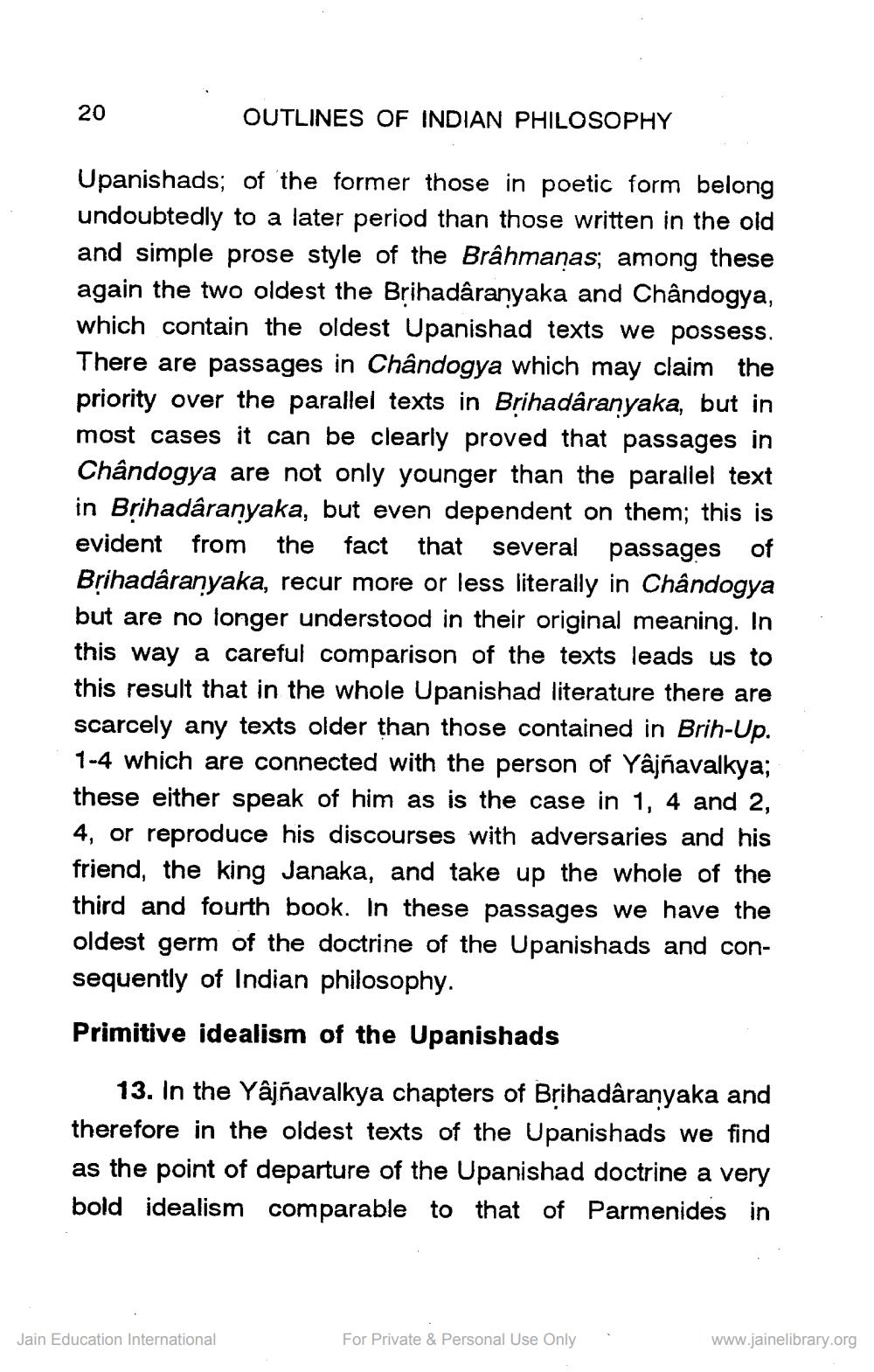________________
20
OUTLINES OF INDIAN PHILOSOPHY
Upanishads; of the former those in poetic form belong undoubtedly to a later period than those written in the old and simple prose style of the Brahmanas; among these again the two oldest the Brihadâranyaka and Chandogya, which contain the oldest Upanishad texts we possess. There are passages in Chandogya which may claim the priority over the parallel texts in Brihadâranyaka, but in most cases it can be clearly proved that passages in Chândogya are not only younger than the parallel text in Brihadâranyaka, but even dependent on them; this is evident from the fact that several passages of Brihadâranyaka, recur more or less literally in Chandogya but are no longer understood in their original meaning. In this way a careful comparison of the texts leads us to this result that in the whole Upanishad literature there are scarcely any texts older than those contained in Brih-Up. 1-4 which are connected with the person of Yâjnavalkya; these either speak of him as is the case in 1, 4 and 2, 4, or reproduce his discourses with adversaries and his friend, the king Janaka, and take up the whole of the third and fourth book. In these passages we have the oldest germ of the doctrine of the Upanishads and consequently of Indian philosophy.
Primitive idealism of the Upanishads
13. In the Yajnavalkya chapters of Brihadâranyaka and therefore in the oldest texts of the Upanishads we find as the point of departure of the Upanishad doctrine a very bold idealism comparable to that of Parmenides in
Jain Education International
For Private & Personal Use Only
www.jainelibrary.org




